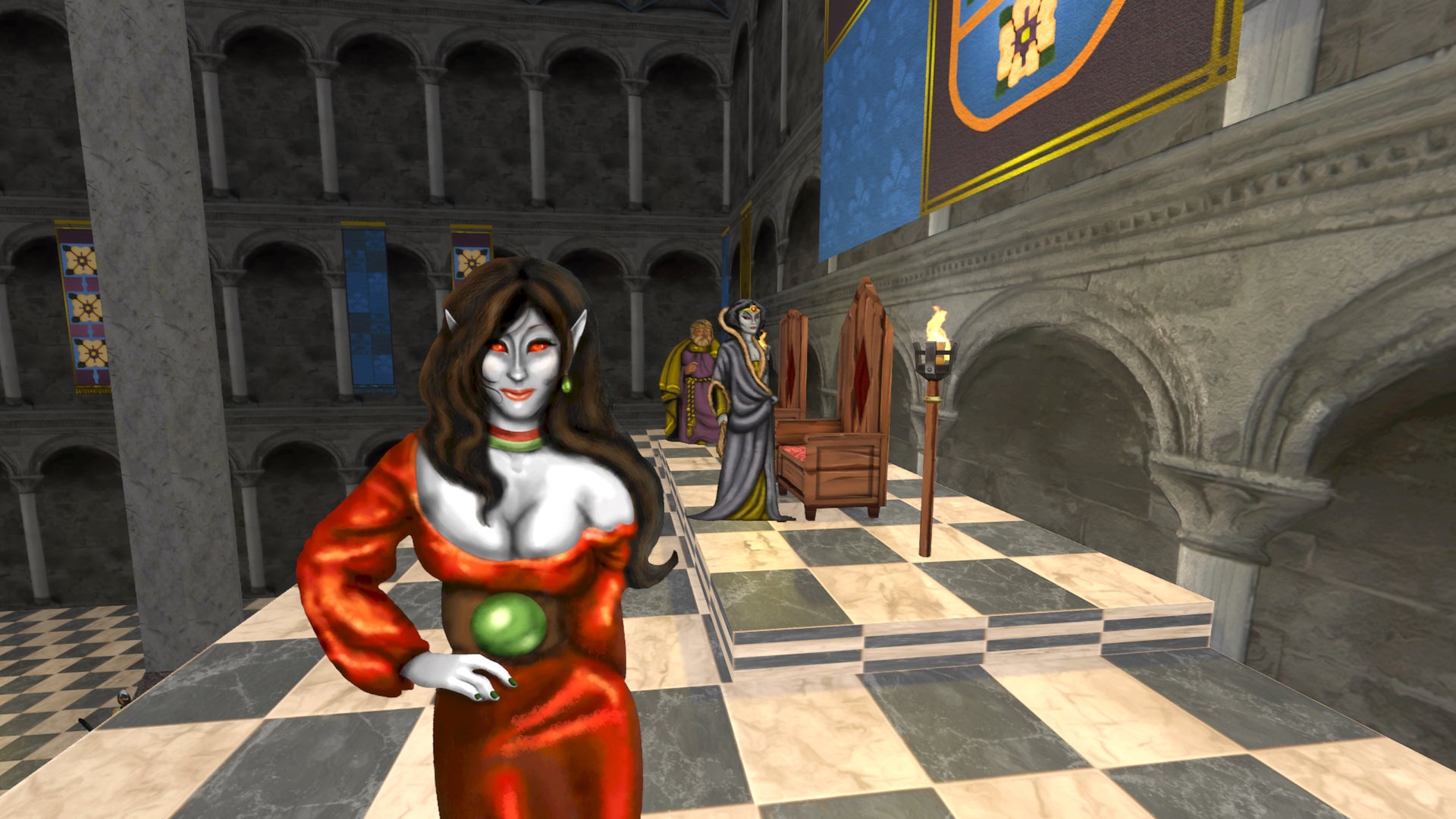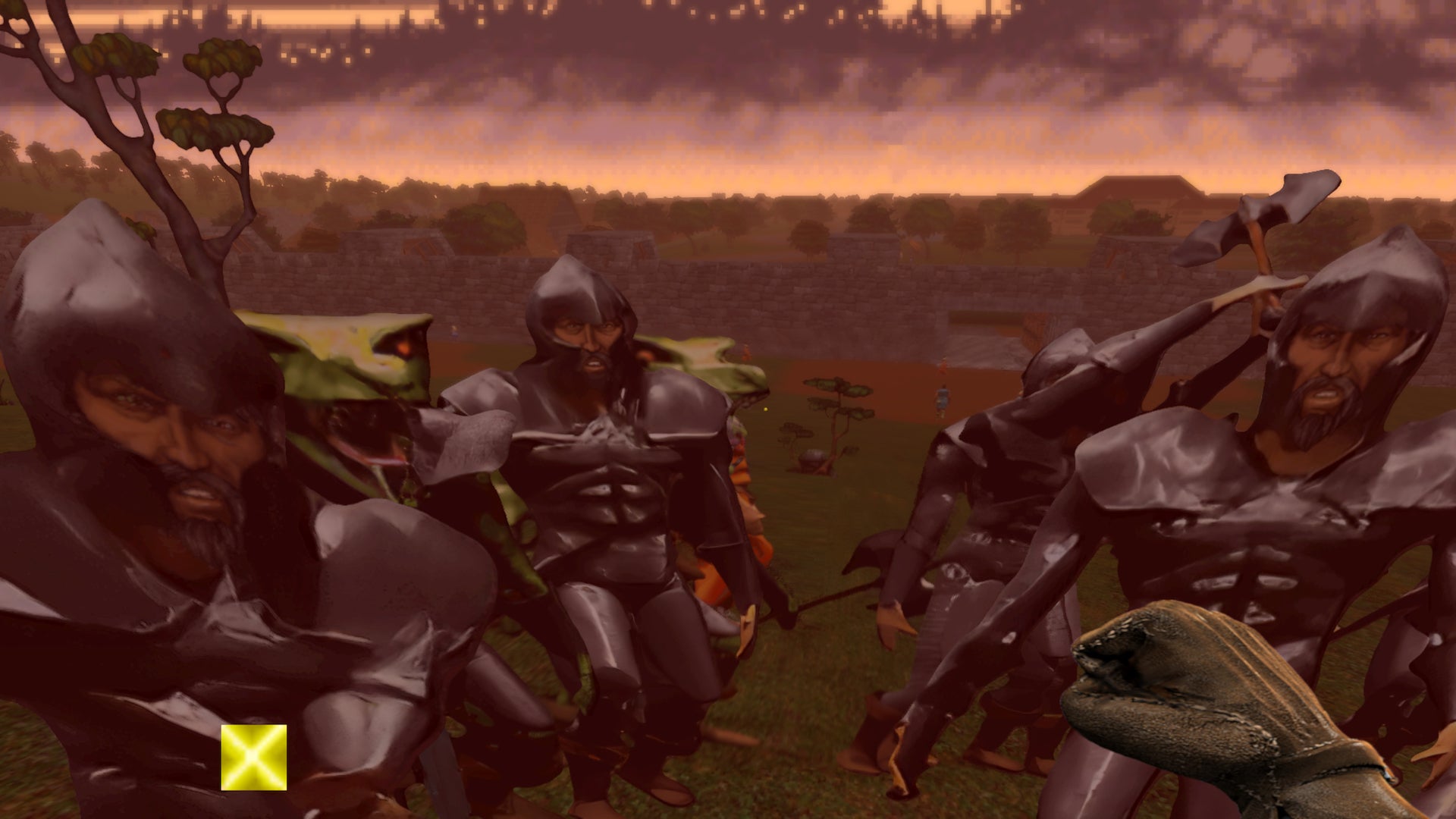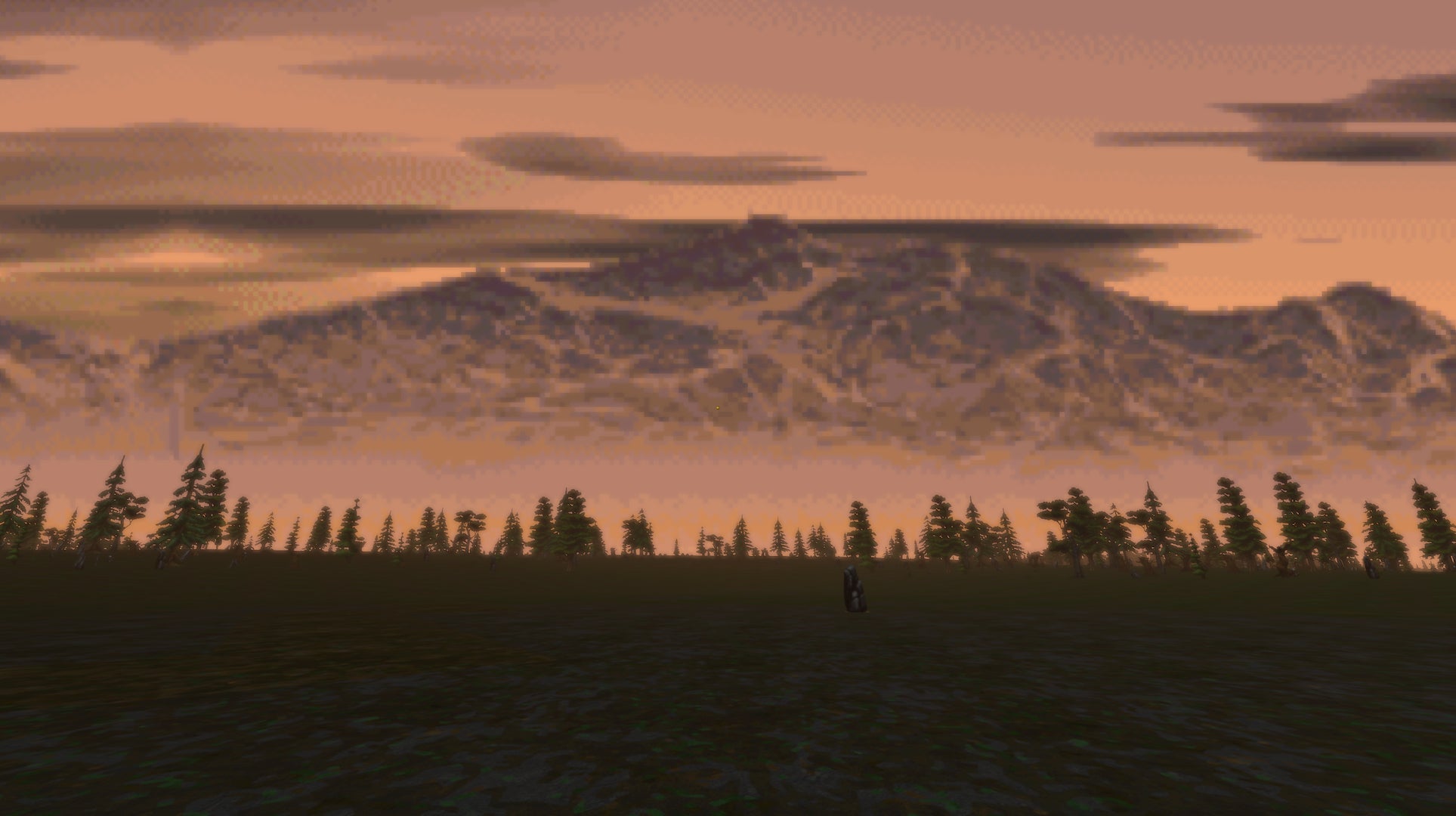If time travel were real, it wouldn’t be like it is on telly, where contemporary heroes arrive in a quainter era with an inbuilt advantage over the locals because of their nicer politics and foreknowledge. No; in reality, it would be scary, confusing, and intimidating – like when you’re in a new city and try to get on a bus, and you realise that you have absolutely no idea what the local bus etiquette is. It would be that, but billions of times worse and applied to every conceivable facet of life. Playing shite old RPGs is the closest thing we have to genuine time travel: to set foot in a world that, despite its vague familiarity, is built on a vastly and impenetrably different set of expectations. In the mid-1990s, the idea that computer software – of any kind – could be designed with ease of use in mind for mass market adoption was still a fairly new one. RPGs? Forget it. Those were games for nerds, and specifically the kinds of nerds into tabletop role-playing with complex levelling systems, stat checks, combat multipliers, and all the other poindexter math that CPUs handle for us now. The audience expected complexity. Demanded it, even. It’s not surprising then that RPGs from the Windows 95 era tend to be bewildering to anyone with modern sensibilities. Daggerfall intimidates the modern player from the off with its baffling character creation and monstrously high difficulty, and has become something of an abandoned relic as a result. The games that followed arguably invented the blockbuster RPG as we know it today – streamlined experiences with much of the complexity hidden or removed. Many insist that Bethesda has “dumbed down” the RPG – I contend that they’ve democratised it, and for good reason. Hold that thought. The important thing to note is that enjoying or emulating the Daggerfall experience on modern PCs, a full quarter-century after release, is absurdly easy to do. For example, there’s a Cliff Notes version of the main quest in the form of ‘Skygerfall’ for those who would like to catch up on the political situation in the Iliac Bay but can’t really stomach Duplo graphics and non-existent level design. Despite having a title that sounds like a Bond film being interrupted by indigestion, it’s an amazing piece of work; a reasonably polished campaign (by Skyrim mod standards) that takes an admirable stab at condensing Daggerfall’s baffling plot into something resembling a story written by writers. But, as genuinely good as Skygerfall is, it isn’t Daggerfall – it’s Skyrim cosplaying as its grandad. Luckily, if you want to subject yourself to the real deal, the anthropological thrill of trying to sieve an Oblivion’s worth of story out of a Great Britain’s worth of procedurally generated towns and dungeons, you have a couple of freeware options: the ‘96 original running under DosBox (a short word about this: don’t) and Daggerfall Unity; its content ported to an all new and highly moddable graphics engine. Full disclosure: it still looks like shit. But, I’m playing a 25-year-old game in 1440p Ultrawide with a DualShock 4 controller, with various mods and interface tweaks running to allow the enjoyment of its delights without, as much as possible, having to battle with its geriatricness. It’s not made magically modern by any stretch, but it’s eminently playable now. If you’re feeling particularly naughty, DFUnity’s saves are in human-readable plain text files, so it’s easy as hell to give yourself a cheeky stats buff for the opening chapters – which I heartily recommend doing, as the first dungeon is a notorious bastard, and the game’s early stages can be absolutely miserable if you don’t know its systems intimately enough to make a Good Character. Which nobody does, despite the many Forum Liars. Also, look, it’s older than most games journalists, there are no achievements for playing on nightmare mode (the only mode). For a such an early entry in the series, though, Daggerfall is remarkably fully formed as an Elder Scrolls game. The chief bullet point from the back of The Elder Scrolls IV: Oblivion’s box always stuck with me as a perfect encapsulation of the Elder Scrolls experience: the promise to let you “live another life in another world”. It’s clear that Daggerfall is following the same ethos. Inhabiting Tamriel is the whole point of the game. Walking its streets. Breathing its air. Unpicking, in your capacity as the Emperor’s agent in a foreign land, the Gordian Knot of court intrigue that threatens to unleash a superweapon. It’s a living novel, dense with prose, and forming the basis for a lore which has captivated fans for decades since. The math involved is a means, not the message. The Edge review of Doom infamously asserted that it would be a more interesting game if you could talk to the monsters. In Daggerfall, you still couldn’t talk to the monsters, but there were 750,000 people to talk to instead. The most baffling numbers in Daggerfall aren’t the stats, they’re the scale: it boasts a world “the size of Great Britain”. It takes two weeks of real time to walk across the map. There are over 15,000 towns. Six or eight endings, depending on who you ask. Charlie Brooker (yes, that one) of PC Zone praised its ambition to simulate an entire world, but questioned the wisdom of this approach when “none of its towns are any more interesting than say, Norwich on a wet Thursday afternoon”. He was right, of course. Bethesda agreed, as evidenced by the sequels. Aside from the samey towns, Daggerfall’s dungeon design is abominable. Both aspects were mostly left to procedural generation to produce and it shows; the end result is plagued by the same issues as every other procedurally generated game, from Mercenary to No Man’s Sky – it’s tyrannically boring, there’s no sense of direction to the environments, and after you’ve seen a handful of locations you have quite literally seen them all. But Daggerfall Unity has a setting for that. Switch the SmallerDungeons flag from False to True in its settings.ini, and non-story dungeons go from dastardly slogs to tight sprints. They’re still bobbins, but they’re nowhere near as obtuse. The effect it has is miraculous – it vastly reduces the number of empty hours wasted searching through pointless dead-ends for quest objectives. These are problems that Bethesda themselves took years to course-correct from. Morrowind’s design took a dramatic shift away from procedural generation, but retained Daggerfall’s core ambition. To simulate a whole world, but with passion, and focus. Morrowind’s land mass is tiny next to Daggerfall’s – it doesn’t even amount to a full percentage point in comparison – because it rightly chooses depth over breadth. Identikit, machine-designed levels were no more. From Morrowind onwards, everything in Tamriel was placed there by hand, and the continent became all the richer – albeit smaller – for it. Daggerfall is still, however, a rewarding experience. cRPGs age like milk, but for those finding the wait for next Elder Scrolls excruciating, Daggerfall offers a grand adventure for anyone willing to push past its wrinkles – much less of a caveat than it once was, thanks to some brilliant amateur devs. And, if the rumours are true, the next game will share much of the setting. So if nothing else you can recce the new digs. Either way, Daggerfall looms large over its sequels, and this will be no less true for The Elder Scrolls 6, wherever it’s set. In the current forms it’s available in, Daggerfall represents a remarkable opportunity to go back and experience a pivotal era in history, in-universe and out.


